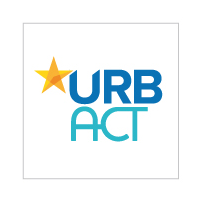When should Cities Use an Integrated Territorial Investment?
Edited on
09 October 2017The new Integrated Territorial Investments form a key plank of the 2014-20 programming period. They are set out in regulatory terms in the Common Provisions Regulation and may be used to deliver Article 7 of the ERDF regulation that stipulates that at least 5% of the European funds should be spent on integrated urban development.

Two other methods for delivering Article 7 are also possible including the existing forms of vertical axis that have been used to great effect in German Lander and also whole programmes for a single city that are likely to be used more rarely (for example in the programmes for the city regions of Brussels, Stockholm and Prague).
What are the Integrated Territorial Investments?
From the EU Common Provisions Regulation (no 1303/2013), Article 36
1. Where an urban development strategy or other territorial strategy, or a territorial pact referred to in Article 12(1) of the ESF Regulation, requires an integrated approach involving investments from the ESF, ERDF or Cohesion Fund under more than one priority axis of one or more operational programmes, actions may be carried out as an integrated territorial investment (an 'ITI').
Actions carried out as an ITI may be complemented with financial support from the EAFRD or the EMFF.
2. Where an ITI is supported by ESF, ERDF or Cohesion Fund, the relevant operational programme or programmes shall describe the approach to the use of the ITI instrument and the indicative financial allocation from each priority axis in accordance with the Fund-specific rules.
Where an ITI is complemented with financial support from the EAFRD or the EMFF, the indicative financial allocation and the measures covered shall be set out in the relevant programme or programmes in accordance with the Fund-specific rules.
3. The Member State or the managing authority may designate one or more intermediate bodies, including local authorities, regional development bodies or non-governmental organisations, to carry out the management and implementation of an ITI in accordance with the Fund-specific rules.
4. The Member State or the relevant managing authorities shall ensure that the monitoring system for the programme or programmes provides for the identification of operations and outputs of a priority contributing to an ITI.
These facets of the new territorial tools were discussed at a meeting URBACT held in Rome on September 11th where an invited audience of cities and their corresponding Managing Authorities and Member State representatives explored what they intended to do using the new Article 7 tools and how this might be organized at city level. The new tool for Article 7 that dominated discussion is the Integrated Territorial Investment or ITI.
So when should a city use the new Integrated Territorial Investment? The simple answer for URBACT cities is that they should use it if they can. So if the ERDF operational programme permits the use of an ITI and if the city has been proposed within the programme then it makes sense for the city to take advantage of the new provision. It looks as though an estimated 10 billion Euros of EU support might be spent through the new mechanism and as many as two thirds of Member states intend to use it. The final outcome will not be known until the end of the negotiations between the Commission and the Member states.
Each Member State will organize its response to the new Article 7 in its own way. Some will have just a few large cities qualifying – this will be the case in the Netherlands where the four largest cities will be the so-called Article 7 cities. In others such as France the net will be cast more widely and there will be 10-12 ITIs in Ile de France alone and as many as 50 cities covered across the whole country.
In general national and/or regional authorities will have already taken the decision about whether they will use ITI or the other provision under Article 7 (vertical axis or whole programmes). These same cities will also be eligible to be members of the new Urban Development Network which will act as a forum for exchange and other activities mobilized through meetings at EU level. However, the vast majority are only delegating the minimum level of functions. Specifically, they are delegating the right for the city concerned to select the operations. This leaves all the rest of the programming activity, including eligibility checks, monitoring, payments and evaluation in the hands of the Managing Authority.
However, even in this limited form, the ITI offers many advantages to the city. Most importantly, it puts the city in the driving seat. The city can assemble a coherent package of projects linked to an overall strategy and have a reasonable expectation that these will be approved. With the traditional bidding system, only some of the projects would get through and the coherence of the package might be compromised. This ability to plan for the implementation is a major advantage of the ITI. It also opens up the possibility to have a single package of projects financed from different priorities in a the main ERDF programme, from other programmes (including European Territorial Cooperation programmes such as Interreg) and from other funds, most notably the European Social Fund, and if appropriate from the Cohesion Fund which finances large projects in the field of environment and energy. In the latter case it could be particularly valuable to complement a large investment with other projects in order to maximize the benefits to a local area.
If your city is one of those identified for an ITI then the obvious next step is to go for it, after having a first discussion with the ERDF Managing Authority. However, as with all aspects of the structural Funds, the devil is in the detail.
Types of ITI
First of all there are urban ITIs and non urban ones. This article will focus on urban ITIs because URBACT is a programme for cities. Non urban ITIs do not contribute to the 5% under Article 7 and may be used to deliver integrated policies in rural areas. Secondly ITIs can take different forms and to explore these the European Commission is conducting a study to look at four different types:
- City regional ITIs in which a metropolitan area is consolidated through being treated as a single ITI. Some of the proposed Polish ITIs follow this approach and have been designed to make up for the lack of a city-regional tier of government. In the case of Wroclaw the ITI will be managed at local level by the core city of Wroclaw itself. Other municipalities will participate as partners in the ITI through a type of board made up of the mayors.
- Deprived neighbourhoods: This was the way in which the integrated approach was developed at European level under the URBAN 1 and 2 programmes and was subsequently mainstreamed in the 2007-13 period. ITIs offer the potential not only to address problems of deprivation but also to focus investment on opportunity areas from which local people can benefit. In particular the ITI can make it possible to coordinate ERDF and ESF resources more effectively than through mono-fund programmes. The Rotterdam Article 7 will focus on deprived neighbourhoods. Rotterdam is in a unique position of being a Managing Authority for the most populous region of the Netherlands and has a lot of experience of managing the funds.
- Urban rural ITIs. As well as being used in a city region context the ITI can be used to strengthen urban rural linkages within a functional urban area. The Gothenburg ITI will work with the city of Gothenburg and neighbouring authorities (see figure 1 below).

Figure 1 : Gothenburg's ITI
- Cross border ITIs are likely to be rare because of the difficulties of operating in different Member States. Well-known examples in Europe include Basel, Frankfurt Oder, Lille, and Geneva. ITIs offer the potential to finance cross border projects and also to link the INTERREG A type cross-border activity with projects from mainstream ERDF and ESF programmes.
How will URBACT support ITIs?
The new URBACT III Operational Programme opens up potential to support ITI alongside the other Article 7 approaches as well as other territorial tools such as the Community Led Local Development. The new programme will contain two new types of network that might be relevant alongside the continuation of Action Planning networks which are currently being tested in URBACT 2.
Transfer networks will enable cities to learn from a ‘giving city’ about how to carry out a specific activity. There are currently six transfer networks being tested as pilots covering topics as varied as using empty buildings in a city (TUTUR), to making the city a gastronomic destination (Gastronomic Cities).
However, it is the implementation networks that will be especially interesting for all the Article 7 cities because these networks will enable cities that have resources from their Operational Programmes to learn from each other during the first years of implementing their action plans and strategies. Although these implementation networks will be open to all cities which have a resource plan in place, they are likely to be especially interesting for those planning the Integrated Territorial Investments because there is likely to be considerable European added value in sharing the early experiences. The first calls are expected to take place end of 2015.
Alongside the network activity which is where most of URBACT’s resource is spent there will also be capacity building for cities involved in networks so that they can build their skills at local level with other stakeholders. Capitalisation and communication activities will allow cities that have not directly participated in networks to benefit from the know-how and knowledge that has been exchanged.
Issues for the cities
The key to success with the new territorial tools such as ITI will be to carry the spirit of the Leipzig charter through into the implementation. This means that the packages of projects should be based on a sound analysis of the problems being addressed, that there should have been the co-production of strategies and plans with a wide range of stakeholders and that the emphasis on integration solutions must be maintained in the phase when delivery of projects is taking place. Cities that wish to deepen participation can combine an ITI with Community Led Local Development and take a bottom-up approach to developing strategies and actions. This is likely to be particularly important in developing new solutions for disadvantaged areas which have often lost out during the crisis.
The period until 2020 will see considerable experimentation in how to use the programme resources to best effect in cities. URBACT will be working with cities to help ensure that the lessons learnt are understood across Europe.
Photo credits: Cité de l'architecture & du patrimoine on flickr
Read More:
URBACT 2014-2020 - URBACT website
Community-Led Local Development or How to Put People at the Center of Policy-Making –URBACT Article
Ten differences between Integrated Territorial Investments (ITI) and Community Led Local Development (CLLD) – URBACT blog
 Submitted by URBACT on
Submitted by URBACT on
